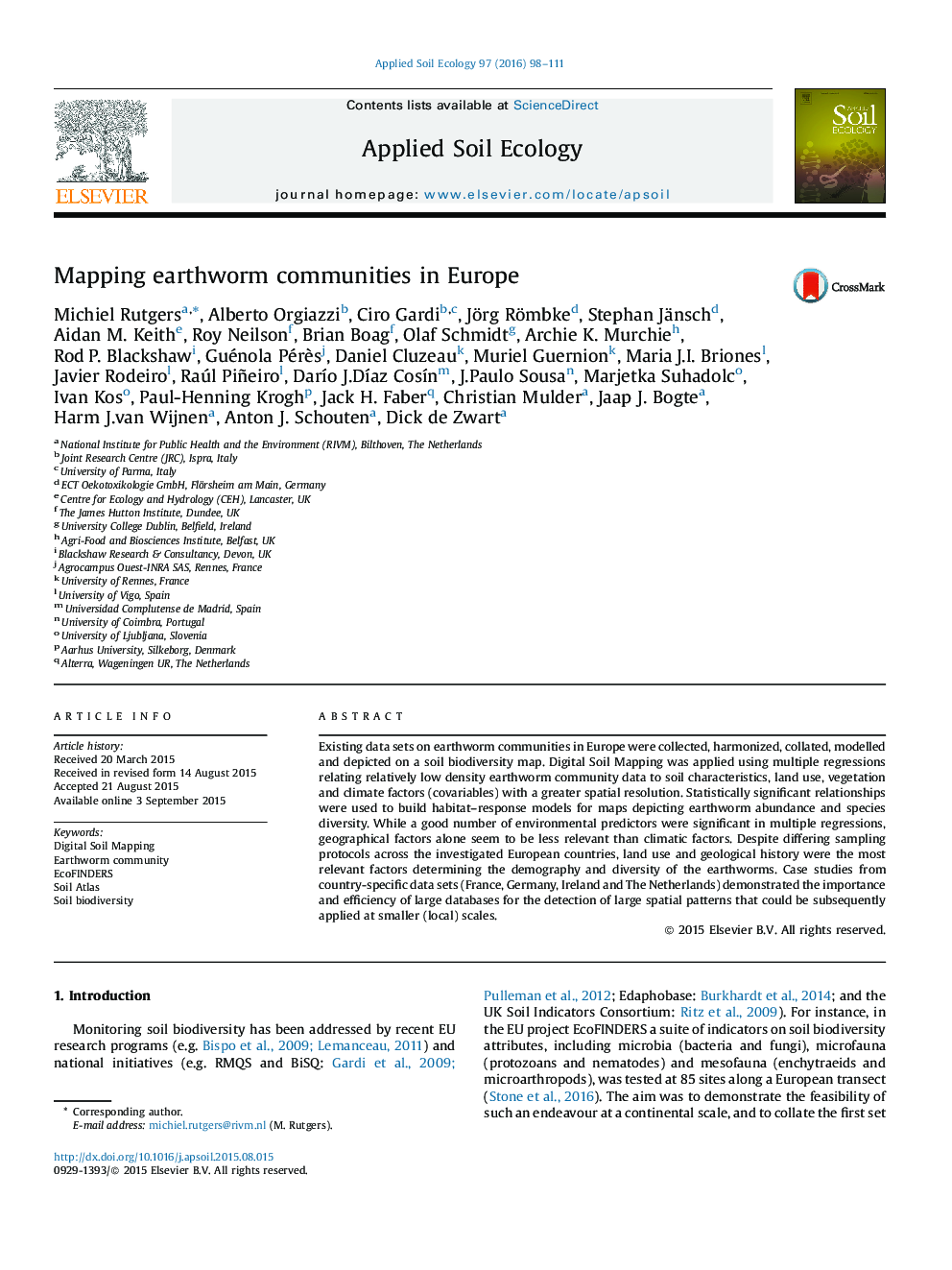| کد مقاله | کد نشریه | سال انتشار | مقاله انگلیسی | نسخه تمام متن |
|---|---|---|---|---|
| 4381978 | 1617786 | 2016 | 14 صفحه PDF | دانلود رایگان |
• Existing earthworm data were collected from 3838 sites in 8 European countries.
• Habitat–response relationships were developed for earthworm community attributes.
• Digital Soil Mapping was used to predict earthworm distributions across Europe.
• These earthworms maps can be used for raising awareness, e.g. in the Global Soil Biodiversity Atlas.
Existing data sets on earthworm communities in Europe were collected, harmonized, collated, modelled and depicted on a soil biodiversity map. Digital Soil Mapping was applied using multiple regressions relating relatively low density earthworm community data to soil characteristics, land use, vegetation and climate factors (covariables) with a greater spatial resolution. Statistically significant relationships were used to build habitat–response models for maps depicting earthworm abundance and species diversity. While a good number of environmental predictors were significant in multiple regressions, geographical factors alone seem to be less relevant than climatic factors. Despite differing sampling protocols across the investigated European countries, land use and geological history were the most relevant factors determining the demography and diversity of the earthworms. Case studies from country-specific data sets (France, Germany, Ireland and The Netherlands) demonstrated the importance and efficiency of large databases for the detection of large spatial patterns that could be subsequently applied at smaller (local) scales.
Journal: Applied Soil Ecology - Volume 97, January 2016, Pages 98–111
